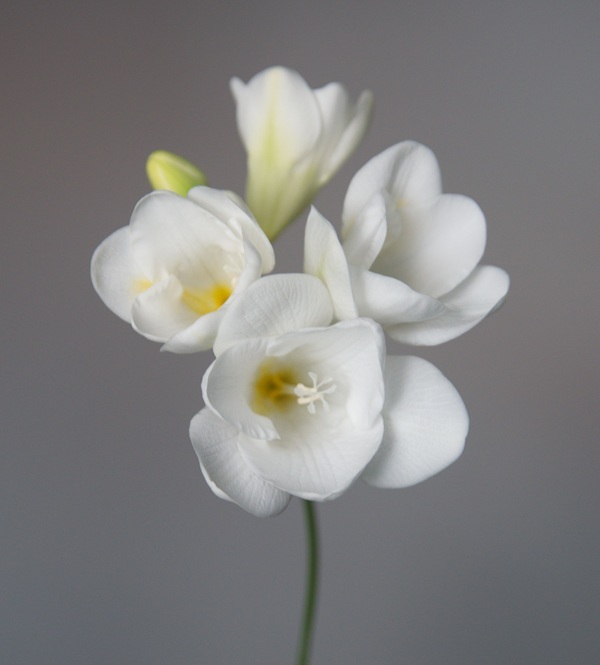

Blooms and Foliage: The Freesia flower has a citrusy frangrance that is strongest in the evening. This is a great benefit if you have it in pots that you can move around your patio for evening get-togethers. Each little 1-2 inch bloom is trumpet-shaped and each stem will have a cluster of flowers of 5-10 blooms which makes this corm perfect for adding to cut flower displays also. The flowers rise above the foliage by several inches which really make them stand out for a delicate airy effect. The medium - bright green foliage is only about 6-12" that is upright and looks like grass. There is a slight arch at the base of the foliage to give it a fan-like arrangement in tidy little clumps.
Zones 9 - 11: This adorable flower will bloom somewhere between February - April depending on harsh/mild the winter is.
Zones 4-8: The Freesia will bloom between May - June if it overwintered in its pot.

Mulitplying: These corms will produce offsets (cormlets) each season. They can be divided and replanted once they are dormant.
Animals: Bees and butterflies are attracted to the Freesia, but it is resistant to deer, squirrels, rabbits (though deer have been known to eat plastic flowers). If eaten in large quantities, it can cause mild digestive issues in your pets.
Blooms and Foliage: The Freesia flower has a citrusy frangrance that is strongest in the evening. This is a great benefit if you have it in pots that you can move around your patio for evening get-togethers. Each little 1-2 inch bloom is trumpet-shaped and each stem will have a cluster of flowers of 5-10 blooms which makes this corm perfect for adding to cut flower displays also. The flowers rise above the foliage by several inches which really make them stand out for a delicate airy effect. The medium - bright green foliage is only about 6-12" that is upright and looks like grass. There is a slight arch at the base of the foliage to give it a fan-like arrangement in tidy little clumps.
Zones 9 - 11: This adorable flower will bloom somewhere between February - April depending on harsh/mild the winter is.
Zones 4-8: The Freesia will bloom between May - June if it overwintered in its pot.

Mulitplying: These corms will produce offsets (cormlets) each season. They can be divided and replanted once they are dormant.
Animals: Bees and butterflies are attracted to the Freesia, but it is resistant to deer, squirrels, rabbits (though deer have been known to eat plastic flowers). If eaten in large quantities, it can cause mild digestive issues in your pets.